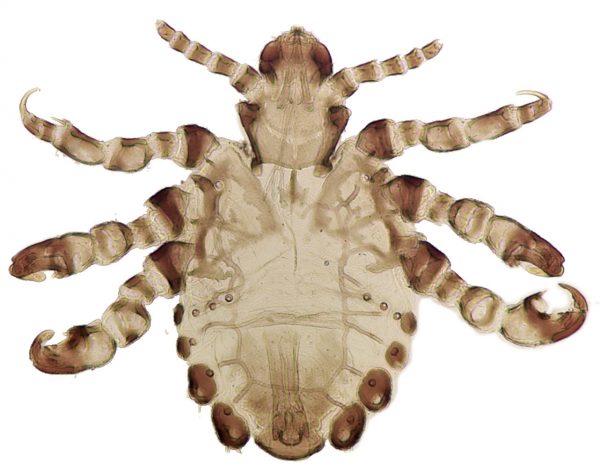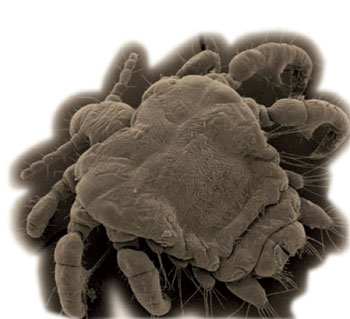New research indicating early humans acquired public lice from gorillas about 3.3 million years ago sheds new light on when humans started to lose their body hair as they migrated out of the trees and onto the savannah.

Florida Museum photo by David Reed
Humans most likely got the gorilla’s lice from sleeping in their nests or eating the giant apes, said David Reed, assistant curator of mammals at UF’s Florida Museum of Natural History and one of the authors of the research published in the BMC Biology journal.
About 3.3 million years ago, lice found on gorillas began to infest humans, Reed said. That they took up residence in the pubic region may have coincided with humans’ loss of hair on the rest of their bodies and the lack of any other suitable niche, he said. Reed and his co-workers’ research stemmed from their fascination with humans’ unique position among primates in being host to two different kinds of lice: one on the head and body (Pediculus), which has become the bane of many schoolchildren, and pubic or crab lice (Pthirus). In contrast, chimps have only head lice and gorillas pubic lice.
Understanding the history of lice is important because the tiny insects give clues about the lifestyles of early hominids and evolution of modern humans, Reed said. Because the human fossil record is patchy and finding early DNA samples is extremely difficult, parasites such as head lice, pubic lice, tapeworms and pinworms that have existed for millions of years provide valuable clues, he said.
“These lice really give us the potential to learn how humans evolved when so many parts of our evolutionary history are obscure,” he said. Lice also can serve as a model in understanding how parasites move from one species to another, Reed said.

Photo by Vincent S. Smith
“If you look at emerging infectious diseases that affect humans all over the world, most have their origins on some other host before threatening humans,” he said. “Studying what it takes for a parasite to be successful in switching hosts adds to our knowledge about what makes a good host for the spread of disease.”
Working with other scientists who collected lice from primates in Ugandan wildlife sanctuaries, the research team extracted DNA from the lice and used fossil data from humans and gorillas to estimate how long ago these two types of lice shared a common ancestor.
In particular, the researchers looked at whether pubic lice developed on their own in humans or whether humans acquired them from gorillas. They believed humans were more likely to have had lice all along because this was a simpler explanation than acquiring lice from gorillas, but they were proved wrong. It is not unusual for lice to switch hosts, with this occurring in both birds and mammals, but they need either direct physical contact or very recent contact to do so, Reed said. In this specific case, the parasite might have been transmitted to humans sleeping in a depression in the ground where a gorilla had slept and nested the night before or even by humans feeding on gorillas, he said.
“Unfortunately, even today among modern humans there’s a bush meat trade where gorillas are killed for their meat,” he said. “If archaic humans were butchering or scavenging those animals 3.3 million years ago, it would be a simple thing to transfer those lice from prey to predator.”
Because humans and gorillas are so closely related and have so many potential interactions of a nonsexual nature, it would have been less likely for the lice to have been transmitted through sexual intercourse, he said.
Reed did the study with postdoctoral researcher Jessica Light at the Florida Museum of Natural History and zoology graduate students Julie Allen and Jeremy Kirchman.